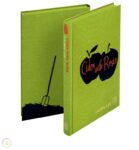
by Herman Wouk, 1965
Herman Wouk lived on St. Thomas for 6 years while researching and writing books. A real-life New York press agent bought a hotel in the Virgin Islands and told the story of his many mishaps. Norman advised him to write a book, but the press agent “demurred.” However, he encouraged Norman to write the book, and that is how this book came about.
It’s the story of Norman Paperman, a Broadway press agent, who falls in love with a fictional Caribbean island, Amerigo, or Kinja, from how the islanders say “King George.” He buys a tropical hotel, the Gull Reef Club, and dreams of a blissful life with his beloved wife, on this island paradise. However, as soon as he buys the hotel, things go terribly wrong: He loses his number one bartender and manager, Thor, to the former owner (Amy Ball) who buys a boat and steals him away. He faces a water shortage, which is a major disaster. As soon as he manages to avert that crises by paying an exorbitant price for water, it rains and rains and rains. Then he loses another faithful employee, his gondola driver become bartender, because the employment laws of the island forbid him to work as a bartender. All the while, Norman, a happily married man whose wife will be joining him shortly, is falling head over heals in love with Iris Tramm, a former actress, living in one of the cottages of his hotel. They hit it off famously and she is a big help to him in all of his travails.


















